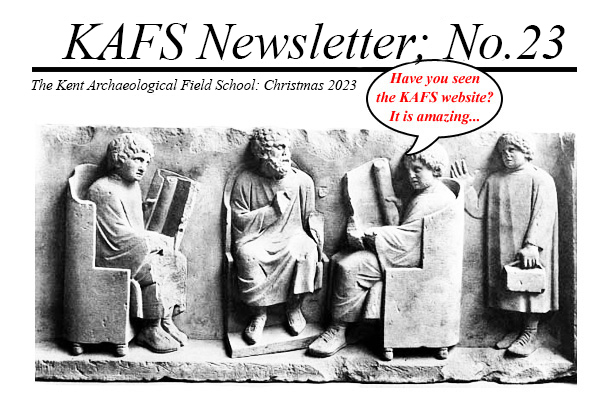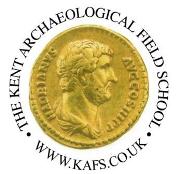 |
|
Dear Reader, we will be emailing a Newsletter in the New Year to keep you up to date with news and views on what is planned at the Kent Archaeological Field School and what is happening on the larger stage of archaeology both in this country and abroad. To become a member or subscribe to the free newsletter go to the home page of www.kafs.co.uk and click where it says ‘Click Here’.
I hope you enjoy! Dr Paul Wilkinson.
|
Breaking News: Christmas 20AD and 2023AD!!

It was a public holiday celebrated around December 25th in the family home. A time for feasting, goodwill, generosity to the poor, the exchange of gifts and the decoration of trees. But it wasn’t Christmas. This was Saturnalia, the pagan Roman winter solstice festival.
But was Christmas, Western Christianity’s most popular festival, derived from the pagan Saturnalia?
The first-century AD poet Gaius Valerius Catullus described Saturnalia as ‘the best of times’: dress codes were relaxed, small gifts such as dolls, candles and caged birds were exchanged.
Saturnalia saw the inversion of social roles. The wealthy were expected to pay the month’s rent for those who couldn’t afford it, masters and slaves to swap clothes. Family households threw dice to determine who would become the temporary Saturnalian monarch. The poet Lucian (AD 120-180) has the Roman god Saturn say in his poem, Saturnalia:
‘During my week the serious is barred: no business allowed. Drinking and being drunk, noise and games of dice, appointing of kings and feasting of slaves, singing naked, clapping.................an occasional ducking of corked faces in icy water- such are the functions over which I preside’.
Saturnalia grew in duration and moved to progressively later dates under the Roman period. During the reign of the Emperor Augustus (63 BC-AD 14), it was a two-day affair starting on December 17th. By the time Lucian described the festivities, it was a seven-day event. Changes to the Roman calendar moved the climax of Saturnalia to December 25th, around the time of the date of the winter solstice.
BACK TO MENU
The KAFS year (again) was curtailed by the pandemic but we look forward to 2024-
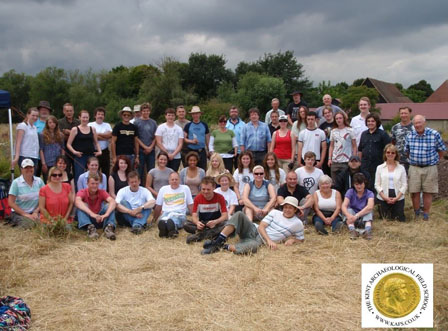
For KAFS members- this is the KAFS ‘dig’ at Abbey Barns at Faversham- can you name the year?
First answer on a postcard wins a free ‘Archaeology’ book!
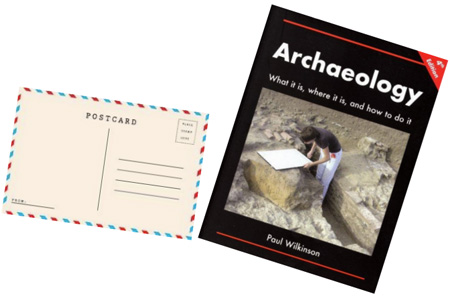
BACK TO MENU
Breaking Ground/Training Week in July 2023 at Snagbrook Farm, Hollingbourne in Kent

Fifteen newcomers to archaeology sat down with experts and specialists from SWAT Archaeology and KAFS to go through what is required in excavating and recording on a modern archaeological site.
A field of eager young and old and in between all coming together to participate in the mysteries of modern archaeology including understanding the amazing geophysical survey taken earlier (left) by the Lenham Historical Society! with white lines showing the location of the Roman foundations.
In addition survey and excavation techniques were explored and practised on the site, part of a Roman villa estate in the adjacent village of Hollingbourne in Kent which was found through field walking a number of years ago.
This was the first season on this amazing site and the focus was on additional geophysical survey, fieldwalking and test trenching with some very interesting results……
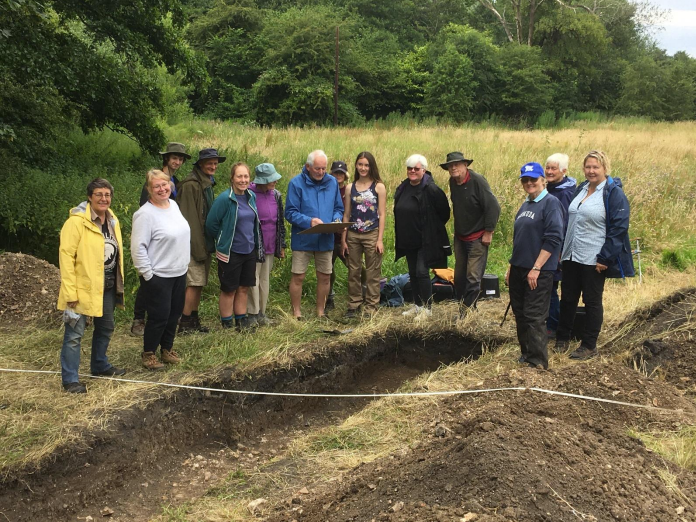
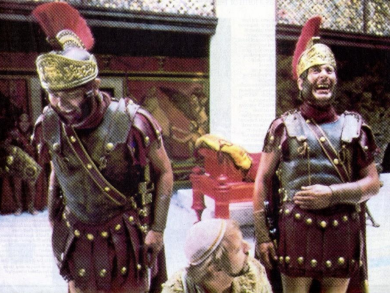
Christmas Gifts/Don’t leave too Late!
Stuck for a Christmas Gift – then try
www.danegeld.co.uk who make accurate historic jewellery and include Celtic to Early Roman to Victorian to Art Deco at affordable prices...Everything from Roman pottery - Terra Sigillata to the Ancient Roman folding stool of Hadrian and all can be found at https://theancienthome.com/collections/romanpottery-terra-sigillata
BACK TO MENU
Breaking News/Does the story of Beowulf explain the Oseberg, Gjellestad and Sutton Hoo ships?
The Netflix film “The Dig” tells the story of the excavation of the Sutton Hoo ship in England. A Norwegian professor believes that a 1500-year-old poem can explain why a number of large ships were buried during the Viking Age. The Beowulf poem describes heroes, monsters and dragons who lived in southern Scandinavia a long time ago. The epic inspired J.R.R. Tolkien to write "Lord of the Rings".
But might it have also been the inspiration behind the burial of large Viking ships in Norway and England? And the construction of the world's largest ship mound in Denmark? This new Beowulf theory has been proposed by Jan Bill, an expert on ship burials and a professor in the Department of Archaeology at the University of Oslo’s Museum of Cultural History. The poem that he contends contains the explanation for the ship burials has more than 3000 lines of verse. It was probably first written down by an unknown poet in England in the 700s. Down is the real excavation at Sutton Hoo. (Photo: British Museum)
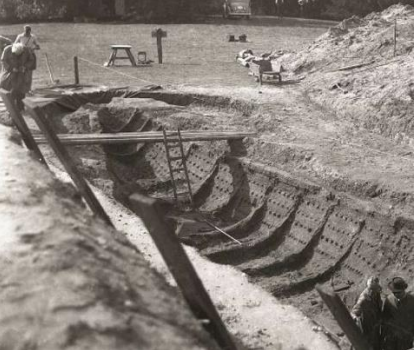
The Netflix movie "The Dig"is based on a novel of the same name. The film has received good reviews. "A beautiful tribute to a bygone era," wrote Aftenposten,one of Norway’s national newspapers.
"
A refreshingly accurate
portrait of archaeology,"wrote British archaeologist Roberta Gilchrist in The Conversation.
Both the novel by the author John Preston and Netflix's new film are probably close to what really happened to the people who took part in the dramatic excavation in Sutton Hoo, which was started just as World War II broke out. You can read more about the dig at the British National
Trust. website.
BACK TO MENU
And now for something different for this winter:
Beowulf in Kent by Paul Wilkinson
Gary Budden writes:
It’s a compelling thought; the monster Grendel
inhabiting the bleak marshlands of the Isle of Harty
(part of what we now call Sheppey), just over the
water from the town of Faversham, separated from
the mainland by The Swale. These islands tend to
overfeed the imagination; lost tribes can dwell
there, grisly remains, evolutionary dead ends, the
sons of Cain.
Sheppey, and the other small islands that appear as odd unmarked blanks of green on Google Maps, hold dark histories. Deadman’s Island and Burnt Wick Island, so close to home and practically unknown, are borderline inaccessible. They hold the mass graves of Napoleonic French prisoners who died on the prison hulks (you’ll know them from Great Expectations) and their bones now rise from the silt. Walk the Hollow Shore between Faversham and Whitstable, look out over to the island across the Swale, no one else around and the wind stinging the eyes. It’s easy to feel Anglo-Saxon in such a place.
More than anything we want the monsters to be there.
I remember looking at the Beowulf manuscript in the British Library for a long time the first time I saw it. It exerted a pull over me that beat any Chinese scroll or Lewis Carroll diary. I read the Heaney translation, discovered American writer John Gardner’s monster-perspective novel, Grendel, as part of the Fantasy Masterworks series (terrible cover). I even watched the film written by Neil Gaiman and with Ray Winstone as our founding English hero, getting entangled with a version of Grendel’s mother who was rather sexier than I’d always imagined.
When I started researching the areas of north east Kent where I grew up, especially the stretch of coast along the Thames estuary, I came across a curious piece of information on the Faversham website:
Nearly ten years ago Dr Paul Wilkinson, a Swale archaeologist, and Faversham journalist and business
woman Griselda Mussett contributed a Faversham Paper which makes a strong, and believable, claim
based on topographical and oral and written folk history that the Beowulf legend had its origins among
place names that were commonplace and are still to be seen around the Faversham area.
I tracked down the papers via the Faversham society and duly received them in the post. I felt like I was falling down a rabbit hole of crackpot theories and dubious speculation. If I’m honest, I wasn’t much interested in the truth of any of the theories. The story appealed. Ray Winstone’s cockney accent suddenly made a sort-of sense. Beowulf as the ex-Londoner moved out to the estuary.
Paul Wilkinson’s colour booklet, Beowulf on the Island of Harty in Kent proudly proclaims AS SEEN ON TV in its bottom right corner, and features the Sutton Hoo mask as its cover, which already seems to be muddying the issue. Near the beginning, he does concede what we’re really dealing with here is mythology, not archaeology or science:
Mythology, on the other hand, is concerned above all with what happened in the beginning. It’s signature is
‘Once upon a time’ and our English beginning could be a small island called Harty just off, but belonging to,
the port of Faversham in Kent
In this Kentish interpretation of the tale, Harty becomes Heorot (Hrothgar’s Hall). Heorot sits at the heart of a large Lathe, or administrative area, the schrawynghop, now called the Lathe of Scray which means an area ‘inhabited by one or several supernatural malignant beings’’ (Margaret Gelling).
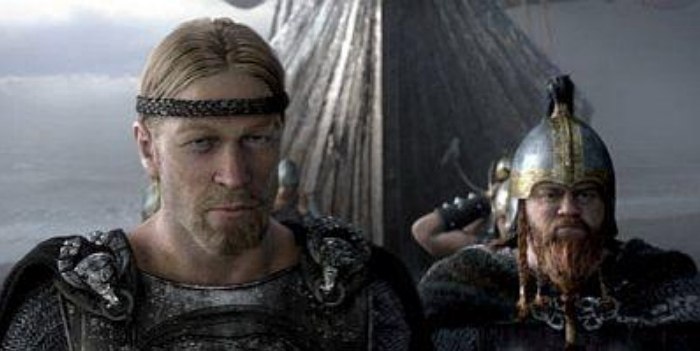
The theory even goes as to suggest that Beowulf was buried under Nagden mound (a possible artificial hill that was destroyed in 1953 by men contracted to rebuild the sea wall between Faversham and Seasalter, after the great North Sea flood.), though by this point the theory has fallen more into wishful thinking and a lot of ‘maybes’ rather than anything that could approximate a credible argument. In my fictional landscape, Grendel and his mother fit in well with the bodies of those dead Frenchman, the prisons across the water on Sheppey, the bleak marshes, the boxing hares and the black curlews of my own fictions.

I know these tidal flats and malignant bogs were dry land once, attached to the Doggerland landmass that connected what was to become Britain to the coasts of Germany and Denmark. My mind already is flowing with ideas, stories of the last remaining malignant supernatural beings that inhabited Doggerland making a last stand in the Kentish marshes. Wiped out by Ray Winstone. Grendel having his arm pulled from its socket on the demon marsh in the Thames estuary. A dragon banner flying above Faversham.
It’s a good idea for a story, right? Maybe that’s enough
For TV clip see: Beowulf in Kent - YouTube
BACK TO MENU
A DAY OF PAGAN RITUALS by Paul Wilkinson
The Winter Solstice is the moment when the sun reaches its most southern point, after which days get longer again. It creates an alignment at Neolithic sites around the world, including Stonehenge, Newgrange in Ireland, and Iwade henge in Kent.
Neo-druids, neo-pagans, and Wiccans - a variation on paganism - gather to chant spiritual mantras and bless the sun.
Many of our traditional Christmas tokens, including the Yule log, mistletoe, and decorating evergreen trees, started as Winter Solstice rituals.

Many people – not least diary manufacturers – believe that the Winter Solstice always falls on 21 December. But the celebration of the winter solstice is not fixed to a specific calendar date – this is because of a mismatch between the calendar year and solar year. The solstice is traditionally celebrated at the sunrise closest to the time when the sun is stationary before beginning its transit to the north or south. This year this occurs at 23.03 GMT on Sunday 21 December, hence the winter solstice celebrations take place at sunrise on 22 December.
The Winter Solstice was a time in prehistory when most cattle were slaughtered (so they would not have to be fed during the winter) and the majority of wine and beer was finally fermented. For us in Kent in the Northern Hemisphere, the December solstice marks the longest night and shortest day of the year. Meanwhile, on the day of the December solstice, the Southern Hemisphere has its longest day and shortest night.
It takes six months for the point of sunrise (setting) to move from one extreme to the other or twelve months to complete the full cycle. Notice that the direction of summer solstice sunrise is opposite to the Winter solstice sunset and the Winter solstice sunrise is opposite to the Summer solstice sunset. The same principle applies throughout the year. Risings (settings) that occur either six months before or after a particular day, are opposite to the settings (risings).
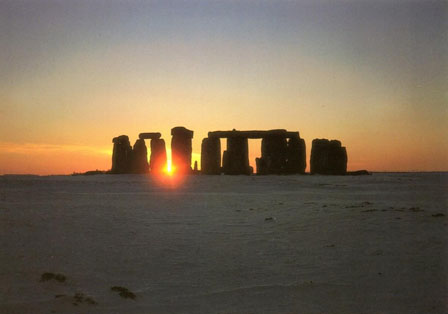
North of the Equator all heavenly bodies appear to move from left to right (clockwise). Given clear conditions, the apex of the rising sun suddenly appears on the horizon, almost like a car headlight coming into view over a hill-top. Slowly the full orb comes into view, which takes about four minutes. Meanwhile the sun will have moved nearly one degree to the right. When exact alignments are required, they are usually taken either on the point of first flash (or gleam) or at the point where the full orb appears tangent to the horizon.
Setting phenomena of sun are in reverse order. The full orb first descends to the horizon and the point where it finally disappears is referred to as 'last light' (or gleam).
Day and night hours at the time of the Equinoxes are equally divided. The further north of Faversham one goes between March and September, the longer the daylight hours become until daylight endures continuously for six months on reaching the Arctic Circle.
Between September and March all is in reverse.
The word Solstice (Latin from sol, the sun and statum to stand still) denotes the time when the sunrise reaches its extreme positions, when it appears to remain static or stand still for several days. This made it difficult to know the exact day of the solstice, so prehistoric people marked the point of sunrise well before the solstice day, and then counted the number of days before it returned to the marked position. Half this number would define the solstice day.
The Heelstone at Stonehenge or post 1431 at Iwade Henge could have been used for this purpose. For example if it took 20 days for the point of sunrise marked by both posts to return to the same position, so 10 days after the first reaching of the posts alignment would be the actual solstice day.
No matter where you live on Earth’s globe, a solstice is your signal to celebrate. For us in Kent on the northern part of Earth, the shortest day comes at the solstice. After the winter solstice, the days get longer, and the nights shorter. It’s a seasonal shift that nearly everyone notices. The universe holds its breath and when it breaths again we are in a new cycle of life.
Paul Wilkinson 02/14/2019
BACK TO MENU
Books for Christmas / Archaeological Guide to Pompeii. Rating 5 Stars
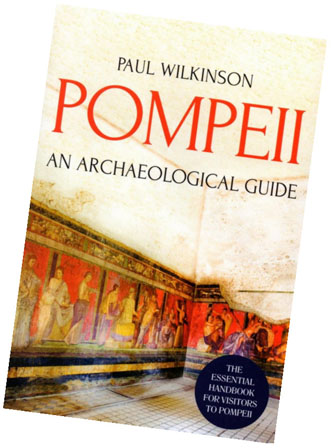
Author Paul Wilkinson and published by Taurus Books 1st Edition and Bloomsbury 2nd & 3rd Editions.
Pompeian pilgrims will be in good hands with Dr Paul Wilkinson, an old Pompeian hand, archæologist, journalist, tour-leader and BBC documentary maker. The index is serviceable, though somewhat choosy on no obvious principle, especially regarding the names of modern scholars. After a tersely helpful Timeline from antiquity to AD 1997, the Introduction and trio of chapters survey everyday life in Pompeii, plus detailed descriptions of the Amphitheatre Riot of AD 59 and the eruption itself, with full transcriptions of Pliny the Younger’s pair of autoptic accounts. These pages display how well Wilkinson knows his Pompeian onions.
This book stands or falls with the archæological sites-guide that makes up its second part.
Here, Wilkinson is faultless. His diagrams are clear, the relevant information dispensed without fuss, with due acknowledgement to the many archæologists and epigraphers involved. All this written in clear, jargon-free English, nicely leavened with wit
The Romans had Pompey the Great. In Wilkinson, we have a Great Pompeian.
Professor Barry Baldwin

We will be back in Oplontis (To Be Advised) for another season of excavationbut be quick as last year we were fully booked. And if you are booked the only criteria is that you are a member of the Kent Archaeological Field School www.kafs.co.uk and that you have some experience or enthusiasm for Roman archaeology, Italian food and Italian sunshine! See also the website for the project at www.oplontisproject.org. Please note food, accommodation, insurance, and travel are not provided.
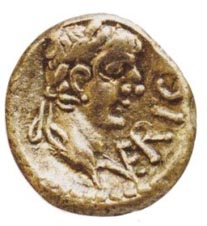
Flights to Naples are probably cheapest with EasyJet. To get to Pompeii take a bus from the Naples airport to the railway station and then the local train to Pompeii. Hotels are about 50eu for a room per night.
We are staying at are the Motel Villa dei Misteri and the Hotel degli Amici.
[email protected] [email protected]
For camping the site
Camping Zeus is next to the hotel: [email protected] and is about 12eu a night.
Transport to Oplontis from Pompeii is not provided but most of the group use the local train (one stop).
Please note it can be hot so bring sun cream and insect repellent! Any queries email me at [email protected] or in Naples call my mobile on 07885 700 112.
We will meet up at 8am every Monday morning of the dig at Motel Villa dei Misteri to start the new week.
Dr Paul Wilkinson
BACK TO MENU
Courses at the Kent Archaeological Field School for 2024 will include:
Field Walking and Map Analysis (Dates TBA)Field work at its most basic involves walking across the landscape recording features seen on the ground. On this weekend course we are concerned with recognising and recording artefacts found within the plough soil. These include flint tools, Roman building material, pottery, glass and metal artefacts. One of the uses of field walking is to build up a database for large-scale regional archaeological surveys. We will consider the importance of regressive map analysis as part of this procedure. The course will cover:
1. Strategies and procedures,
2. Standard and non-standard line walking, grid walking,
3. Pottery distribution, identifying pottery and building ceramics.
We will be in the field in the afternoons so suitable clothing will be necessary.
Cost £20 if membership is taken out at the time of booking. For non-members the cost will be £25.
Snagbrook Roman Villa and Water mill: Dates to be advised (Dates TBA) Archaeological excavation on the site of a Roman Villa and water mill at Hollingbourne in Kent.
Archaeological excavation on the site of a recently discovered Roman Villa and water mill at Wye in Kent
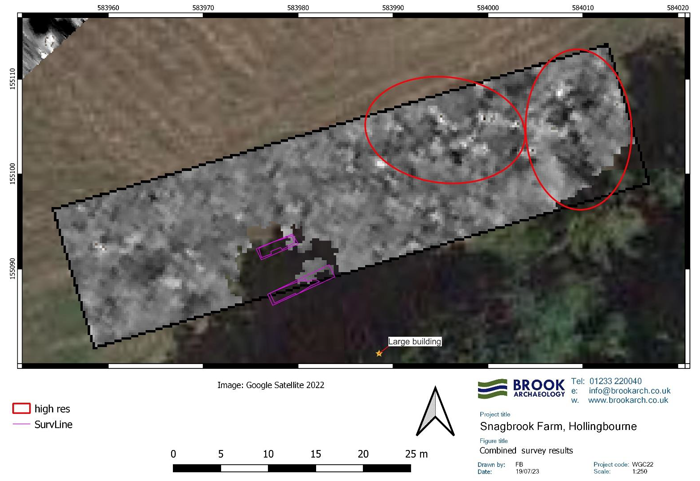
On this two week investigation we shall look at the ways in which archaeological sites are discovered and excavated and how different types of finds are studied to reveal the lives of former peoples. Subjects discussed in the morning will include aerial photography, regressive map analysis, HER data, and artefact identification. Within this investigation there is a five day course which will be especially useful for those new to archaeology, as well as those considering studying the subject further. After tea break we will participate in an archaeological investigation on a Roman building under expert tuition. Expert diggers are not required to participate in the tool box talks.
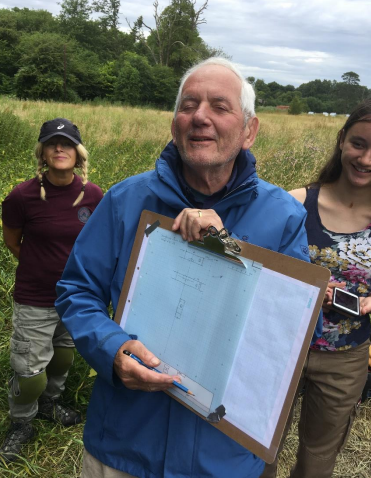
Training Week for Students on a Roman villa
and water mill at Hollingbourne in Kent
It is essential that anyone thinking of digging on an archaeological site is trained in the procedures used in professional archaeology. Dr Paul Wilkinson (left), author of the bestselling "Archaeology" book and Director of the dig, will spend five days explaining to participants the methods used in modern archaeology. A typical training day will be classroom theory in the morning (on site) followed by excavation at the Roman building at Fairbrook Farm in the village of Hollingbourne in Kent..
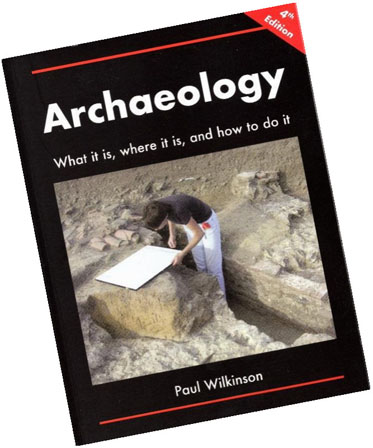
Topics taught each day are:
Monday. Why dig?
Tuesday: Excavation Techniques.
Wednesday: Site Survey.
Thursday: Archaeological Recording.
Friday: Small Finds.
Saturday and Sunday (free) digging with the team.
A free copy of "Archaeology" 4th Edition will be given to participants.
Cost for the course is £100 if membership is taken out at the time of booking plus a Certificate of Attendance.
Excavating at 'Villa B' at Oplontis next
to Pompeii in Italy: Dates TBA
An opportunity to participate in excavating and recording Roman features in the landscape from this new site first identified by the Lenham Archaeological Society which may include a Roman villa, aisled barn and watermill and recent investigations by the KAFS have identified Roman building remain in the vicinity of the stream (left).
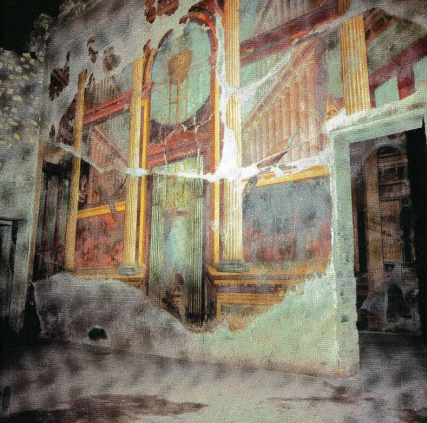
Excavating at 'Villa B' at Oplontis next to Pompeii in Italy: Dates TBA
We will be spending four weeks in association with the University of Texas investigating the Roman Emporium (Villa B) at Oplontis adjacent to Villa A (left) next to Pompeii. The site offers a unique opportunity to dig on iconic World Heritage Site in Italy and is a wonderful once in a lifetime opportunity.
The only criteria to book is that you are a member of the Kent Archaeological Field School www.kafs.co.uk and that you have some experience or enthusiasm for Roman archaeology, Italian food and Italian sunshine!
See also the website for the project at www.oplontisproject.org.,br>
Please note food, accommodation, insurance, and travel are not provided.
Flights to Naples are probably cheapest with EasyJet. To get to Pompeii take a bus from the Naples airport
to the railway station and then the local train to Pompeii. Hotels are about 50eu for a room per night. We
are staying at are the Motel Villa dei Misteri and the Hotel degli Amici.
[email protected] [email protected]
For camping the site
Camping Zeus is next to the hotel: [email protected] and is about 12eu a night.
Transport to Oplontis from Pompeii is not provided but most of the group use the local train (one stop).
Any queries email me at [email protected] or in Naples call my mobile on 07885 700 112.
We will meet up at 8am every Monday morning of the dig to start the new week.
BACK TO MENU
Merry Christmas from all at KAFS!


For all booking enquiries email
[email protected]
The Kent Archaeological Field School.
The Office, School Farm Oast,
Graveney Road, Faversham, Kent ME13 8UP
Tel: 01795 532548 Email:
[email protected]
Director Dr Paul Wilkinson FRSA MCIfA
